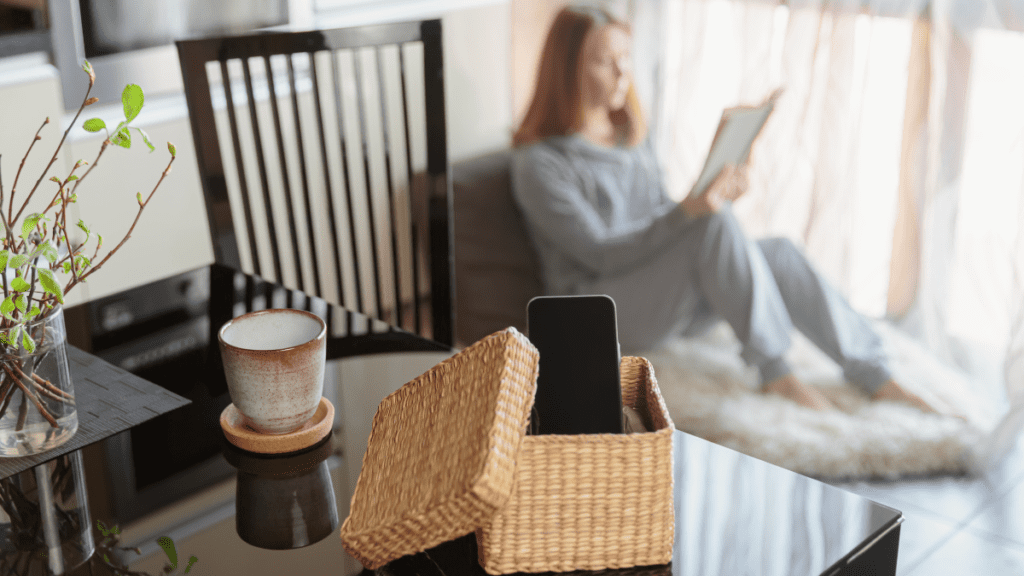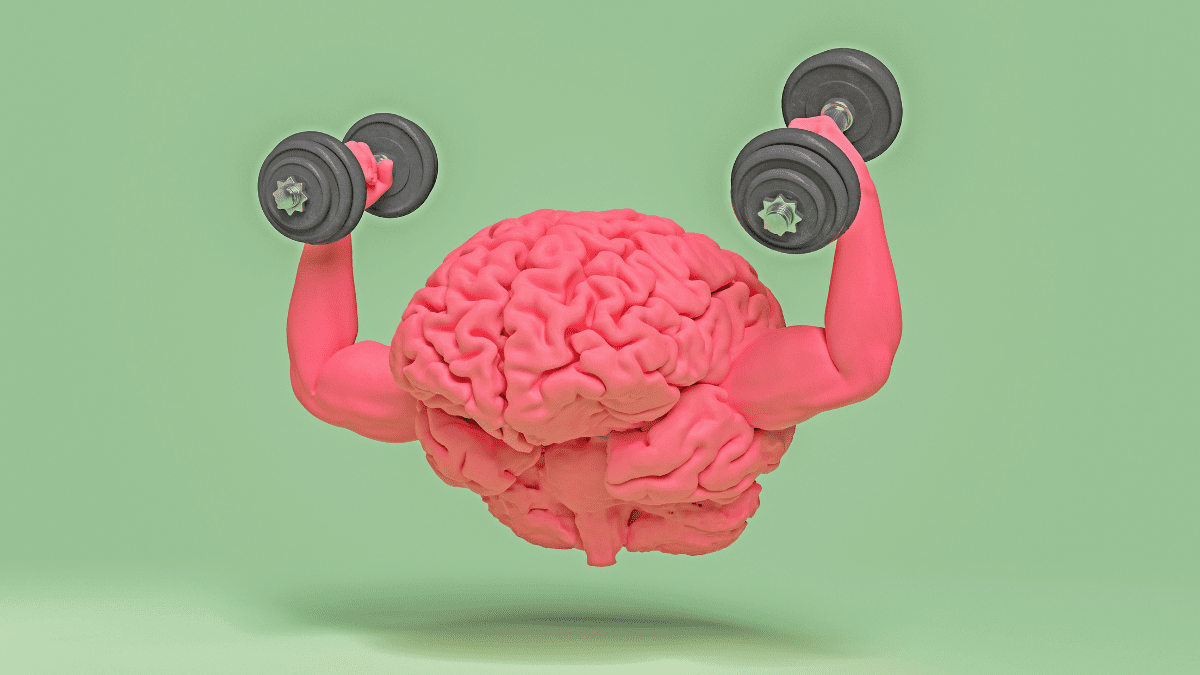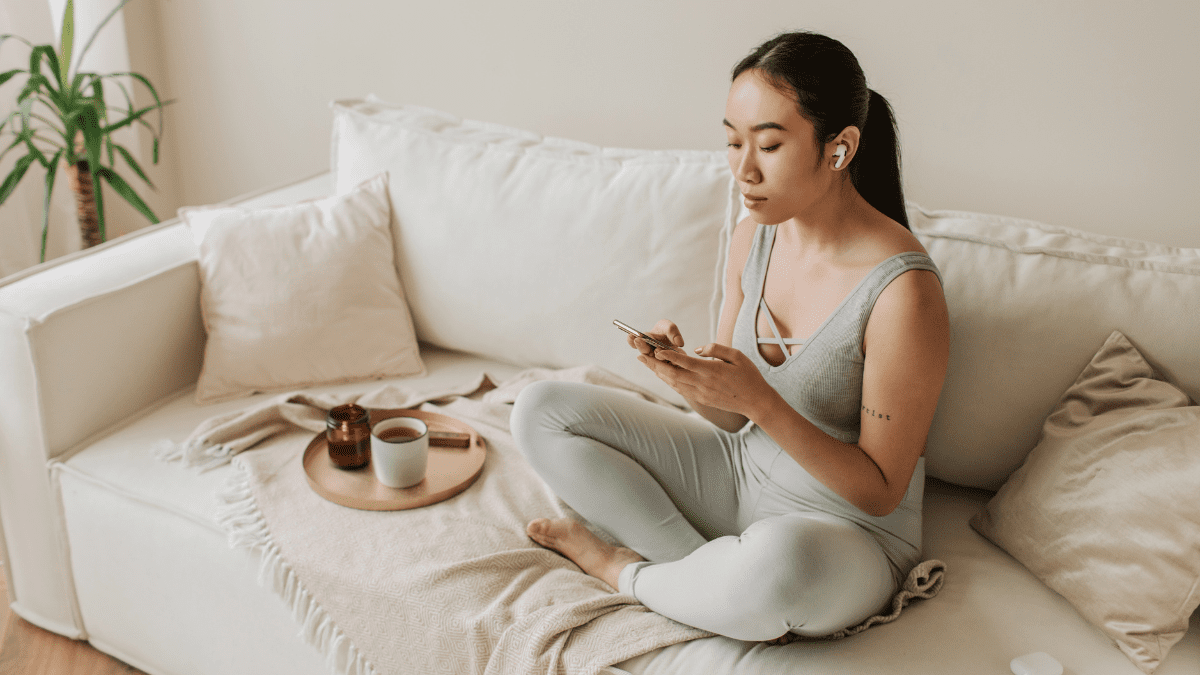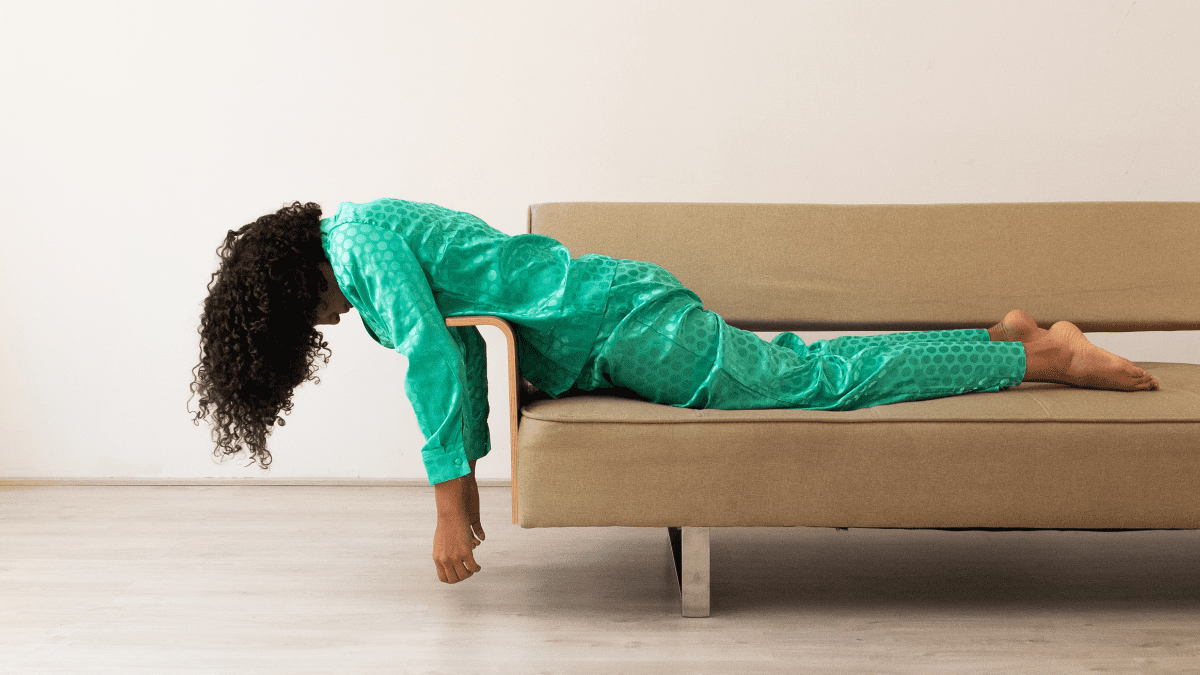Digital Detox: How to Reset Your Brain & Regain Focus
Is your brain overloaded by endless screen time? A digital detox can reset your mind, sharpen focus, and reduce stress. Learn how to unplug and reclaim your mental clarity today!

Do you feel drained after hours of scrolling? A digital detox might be exactly what you need. Constant screen exposure affects focus, sleep, and mental well-being. Notifications, social media, and endless emails keep your brain in overdrive. As a result, stress builds, and concentration suffers.
Taking a break from screens can reset your mind. It helps improve attention, reduce anxiety, and boost productivity. In fact, cutting back on digital overload can be as effective as natural remedies for anxiety. If you struggle with stress, try these proven ways to find peace.
But where do you start? A successful digital detox is more than just turning off your phone. It requires intention, strategy, and consistency. In this guide, we’ll explore the effects of too much screen time, the benefits of unplugging, and how to reclaim your focus. Let’s dive in!
What is a Digital Detox?
A digital detox is a break from screens. It means unplugging from phones, computers, and social media. The goal is to reset your brain and improve focus. Constant screen use overwhelms the mind. Taking time away helps restore balance.
Many people struggle with digital overload. Notifications, emails, and social media demand attention. As a result, focus weakens, and stress increases. A digital detox for mental clarity can reverse these effects. By limiting screen time, you create space for real-life interactions, deeper thinking, and better sleep.
Why Do You Need a Digital Detox?
Screens are addictive. Social media platforms are designed to keep you scrolling. The more time you spend online, the harder it becomes to unplug. This leads to digital fatigue, anxiety, and even depression. Studies show that excessive screen time increases stress and reduces attention span.
Taking a break improves mental health. It allows your brain to rest. It also helps reset dopamine levels, which control motivation and happiness. Without constant digital stimulation, your mind becomes clearer, and focus returns.
How a Digital Detox Improves Well-Being
A successful digital detox does more than reduce screen time. It helps restore emotional balance. Less screen exposure leads to better sleep, lower stress, and improved concentration. Many people also notice stronger relationships. Without digital distractions, real-life conversations become more meaningful.
Another benefit is increased productivity. Without constant notifications, the brain works more efficiently. Tasks become easier, and creative thinking improves. A short detox can reset your habits and bring long-term benefits.
If screen addiction is holding you back, start small. Set boundaries, limit notifications, and create screen-free zones. Even a few hours of unplugging can make a big difference.
The Effects of Too Much Screen Time on the Brain
Excessive screen use impacts brain function. A digital detox helps reverse these effects. Without breaks, the brain struggles to focus. Notifications and social media keep the mind overstimulated. As a result, attention span decreases, and mental fatigue increases.
The human brain is not wired for constant digital input. Screens flood it with information. This leads to cognitive overload. Processing too much at once makes it harder to retain details. A digital detox for better brain health can improve memory and learning. Taking breaks allows the mind to reset, leading to sharper focus and better productivity.
How Screens Affect Attention and Focus
Screens demand attention. Every notification triggers a dopamine response. This makes digital content addictive. The more we check our devices, the harder it becomes to concentrate. Over time, multitasking weakens the brain’s ability to stay focused.
Studies suggest that excessive screen time rewires the brain and reduces cognitive function. This makes tasks feel overwhelming. A digital detox helps break this cycle. By reducing distractions, the brain regains its ability to focus on one thing at a time.
The Link Between Screen Time and Mental Health
Too much screen exposure increases stress. Social media fuels anxiety by triggering comparison and unrealistic expectations. Constant exposure to negative news worsens this effect. Taking a digital detox for mental well-being helps reduce these stressors. A break from screens can lower anxiety and improve mood.
Sleep is also affected by screens. Blue light from devices interferes with melatonin production. This delays sleep cycles and reduces sleep quality. Without enough rest, the brain struggles to function properly. A digital detox before bedtime can improve sleep and restore energy.
Reducing screen time benefits both the brain and body. Even short breaks help improve focus, reduce stress, and restore mental balance. Next, let’s explore the biggest benefits of a digital detox and how it can transform your life.

The Benefits of a Digital Detox
Taking a digital detox offers powerful benefits. It helps clear mental fog, reduces stress, and improves focus. When the brain gets a break from screens, it resets. As a result, productivity increases, and overall well-being improves.
Many people do not realize how much screens affect their health. Constant notifications keep the brain overstimulated. Over time, this leads to mental exhaustion. A digital detox for brain recovery allows the mind to slow down. This break restores energy and improves concentration.
Improved Focus and Productivity
Screens make multitasking tempting. However, switching between tasks reduces efficiency. The brain struggles to keep up with constant digital input. As a result, focus weakens, and simple tasks feel overwhelming.
Research shows that a digital detox enhances cognitive function and attention span. Without constant distractions, the mind becomes sharper. Work feels easier, and tasks get completed faster.
Reduced Stress and Better Mental Health
Social media and news overload increase anxiety. The constant flood of information keeps stress levels high. A digital detox for mental peace removes these stressors. Unplugging from screens helps the brain relax and lowers cortisol, the stress hormone.
Taking time away from screens also improves emotional well-being. People who reduce screen time report feeling more present and connected to real life. Relationships improve when conversations happen without digital distractions.
Better Sleep and Higher Energy Levels
Screens disrupt sleep patterns. Blue light from devices interferes with melatonin production. This makes it harder to fall asleep and reduces sleep quality. A digital detox before bed helps regulate the body’s natural sleep cycle.
When sleep improves, energy levels rise. The brain feels refreshed in the morning. Without digital distractions, mornings become more productive. Simple changes, like avoiding screens an hour before bed, can make a big difference.
A digital detox offers both short-term and long-term benefits. Even small changes help reset the mind and body. Next, let’s explore the best ways to do a digital detox successfully.
How to Do a Digital Detox Successfully
Starting a digital detox may seem difficult, but the right approach makes it easier. Reducing screen time step by step helps the brain adjust. The key is to set clear goals and create boundaries.
Many people feel anxious when they first unplug. However, a digital detox for better mental clarity brings quick benefits. Focus improves, stress decreases, and energy levels rise. Taking small breaks from screens throughout the day helps build lasting habits.
Step 1: Identify Your Digital Triggers
Understanding screen habits is the first step. Some people check their phones out of boredom. Others scroll social media for hours without realizing it. Identifying these triggers makes it easier to reduce screen time.
Apps that track usage can help. Many people are surprised by how much time they spend on their devices. Studies show that reducing daily screen time improves attention span and focus. Being aware of habits is the first step to change.
Step 2: Set Boundaries and Time Limits
Creating rules around screen time helps maintain balance. Setting a daily screen time limit prevents mindless scrolling. Turning off unnecessary notifications reduces distractions.
Another effective strategy is scheduling no-tech hours. Designating screen-free time in the morning and before bed improves mental clarity. Using the “Do Not Disturb” mode keeps unnecessary alerts from interrupting focus.
Step 3: Replace Screens with Meaningful Activities
Replacing screen time with fulfilling activities makes a digital detox more enjoyable. Reading, exercising, or spending time in nature helps reduce reliance on screens. Engaging in creative hobbies like journaling or painting also strengthens focus.
Social interactions improve without digital distractions. Having conversations without checking a phone deepens relationships. Many people feel more present and engaged when they disconnect from technology.
A digital detox does not mean eliminating screens completely. It means using them mindfully. Making small changes each day leads to long-term benefits. Next, let’s explore how long a digital detox should last for the best results.

How Long Should a Digital Detox Last?
The ideal length of a digital detox depends on personal goals. Some people need a short reset, while others benefit from a longer break. Whether it’s a few hours or a month, reducing screen time improves focus and well-being.
For beginners, starting with a 24-hour digital detox challenge can be effective. One full day without screens helps the brain relax. It also reveals how often digital habits take over daily life. Many people feel more present and focused after just one day.
Short-Term vs. Long-Term Digital Detox
A short detox lasts between 24 hours and one week. It helps reset the mind, reduce stress, and improve sleep. Limiting screen use during this period boosts mental clarity. A short detox is perfect for those who feel overwhelmed but need a realistic approach.
A long-term detox lasts 30 days or more. This is ideal for breaking deep digital habits. It allows the brain to rewire and develop healthier routines. Experts suggest that a month-long digital detox can help rebuild focus and reduce tech dependency.
Daily Digital Detox Habits for Balance
A full detox is not always necessary. Instead, small daily changes can help. Limiting social media, reducing notifications, and setting screen-free zones create a balanced relationship with technology.
For those who cannot take an extended break, a daily digital detox routine works well. This includes:
- Avoiding screens for the first hour after waking up.
- Taking breaks from devices during meals.
- Turning off screens at least an hour before bed.
- Using the “Do Not Disturb” mode to reduce distractions.
The best detox length is the one that fits personal needs. Even a few hours without screens makes a difference. Next, let’s explore the science behind digital detox success and why it works.
The Science Behind Digital Detox Success
A digital detox does more than reduce screen time. It helps the brain reset, improves focus, and lowers stress. Studies show that taking breaks from technology improves mental and physical health. The brain needs downtime to function at its best.
Constant digital stimulation overwhelms the nervous system. Notifications, emails, and social media keep the mind in a state of alertness. This leads to mental fatigue and reduced attention span. A digital detox for better brain function allows the mind to rest and recover.
How a Digital Detox Rewires the Brain
The brain adapts to habits. Frequent screen use increases dopamine levels, creating a cycle of instant gratification. This makes people crave digital stimulation. However, reducing screen time helps rebalance brain chemistry.
Research suggests that limiting screen exposure improves focus, memory, and problem-solving skills. A digital detox allows the prefrontal cortex, responsible for decision-making, to function more effectively. Over time, self-control and concentration improve.
The Role of Dopamine in Digital Addiction
Dopamine is the brain’s reward chemical. Social media, video games, and endless scrolling trigger dopamine spikes. These short bursts of pleasure keep people hooked on screens. However, too much stimulation reduces the brain’s ability to experience natural rewards.
A digital detox for dopamine reset helps restore balance. Without constant digital triggers, dopamine levels stabilize. This makes simple activities, like reading or exercising, feel more enjoyable. Many people notice a boost in motivation and mood after reducing screen time.
Why Digital Detox Improves Sleep and Reduces Stress
Screens interfere with melatonin production, the hormone that regulates sleep. Blue light from devices tricks the brain into staying awake. This disrupts sleep cycles and reduces rest quality.
Unplugging from screens before bed improves melatonin release. A digital detox for better sleep helps regulate the body’s natural rhythms. This leads to deeper rest and increased energy. Stress levels also drop when the brain has time to unwind without digital stimulation.
The science is clear. A digital detox resets the brain, improves focus, and restores balance. Next, let’s wrap up with key takeaways and how to maintain a healthy digital life.
How to Maintain a Healthy Digital Life
A digital detox is not just a one-time reset. To see lasting benefits, it must become part of your daily routine. Balancing screen time with real-life activities leads to better focus, improved mental health, and stronger relationships.
Many people struggle with going back to old habits after a detox. However, setting clear boundaries helps maintain balance. A digital detox for long-term wellness requires mindful usage and regular breaks.
Set Screen Time Limits
Tracking daily screen time is the first step. Many people do not realize how much time they spend on devices. Using apps that monitor usage helps identify problem areas.
Studies suggest that reducing screen time improves productivity and mental clarity. Setting a daily limit prevents overuse and helps maintain focus.
Create No-Tech Zones
Designating certain areas as screen-free encourages real-life connections. The bedroom, dining table, and workout spaces are great places to start. These no-tech zones improve sleep, relationships, and overall well-being.
A digital detox for better social interactions strengthens personal connections. Without devices, conversations become more meaningful. Eye contact and deep discussions replace mindless scrolling.
Schedule Regular Digital Detox Breaks
Taking mini-breaks throughout the day prevents digital overload. The 20-20-20 rule is an effective strategy. Every 20 minutes, take a 20-second break and look at something 20 feet away. This helps reduce eye strain and mental fatigue.
Another effective habit is a weekly 24-hour digital detox. Unplugging once a week resets the brain and improves mindfulness. Even small breaks make a big difference in overall well-being.
Use Technology Mindfully
Not all screen time is bad. The key is using it intentionally. Turning off unnecessary notifications reduces distractions. Checking emails and social media at set times prevents endless scrolling. A digital detox for mindful technology use helps create a healthier relationship with screens.
Maintaining a digital detox lifestyle leads to lasting benefits. Small changes make a big impact. Next, let’s explore the key takeaways and how to apply them to everyday life.
Key Takeaways: How to Apply a Digital Detox to Everyday Life
A digital detox is more than just a temporary break. It is a way to reset your mind, improve focus, and create a healthier relationship with technology. Even small changes can lead to big results.
Unplug with Purpose
Start by setting clear goals. Decide why you need a digital detox and what you want to achieve. Reducing stress, improving focus, and sleeping better are great reasons to unplug.
Identify your biggest digital distractions. Social media, emails, and notifications steal time and energy. Setting boundaries helps regain control.
Build Healthier Digital Habits
Creating no-tech zones in your home keeps screen time under control. Avoiding screens in the bedroom improves sleep. Limiting phone use at the dinner table strengthens relationships.
A daily digital detox routine also helps. Set screen-free hours in the morning and before bed. Take breaks throughout the day. Even a few minutes away from screens can refresh your mind.
Make It Sustainable
A digital detox should be realistic. Going offline completely is not always possible. Instead, aim for balance. Use technology mindfully. Turn off unnecessary notifications. Schedule social media and email checks instead of constantly scrolling.
Try a 24-hour digital detox challenge once a week. Unplugging for a full day allows your brain to reset. Many people feel more present, energized, and productive afterward.
Your Digital Detox Starts Now
The best time to start is today. Begin with small steps. Reduce screen time gradually. Replace digital habits with real-world activities. The more you practice, the easier it becomes.
A digital detox improves mental clarity, emotional well-being, and overall health. The key is consistency. Stay mindful of your screen habits, and you will feel the benefits in every part of your life.







